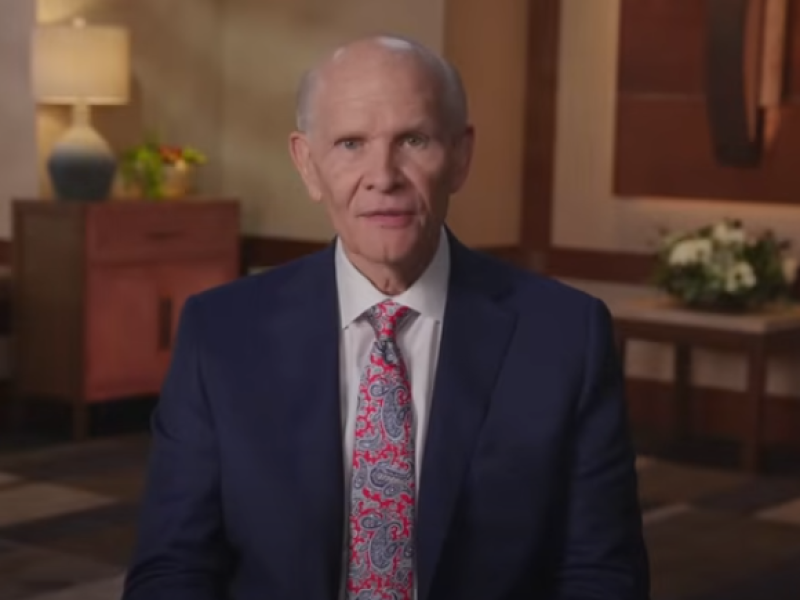Jesus is coming, look busy could be seen as the theme to Doctrine and Covenants 133. Near the same time that Section 1 was revealed as a preface to the Book of Commandments, Joseph Smith received Section 133 as an appendix. These closing words to the saints are focused on the coming of Christ and what we need to do to prepare.
God’s goal for His children is to see us with Him again. That eternal life is best described in John 17 and Doctrine and Covenants 132 as “knowing” God. This week’s Come, Follow Me lesson teaches sacred truths restored through Joseph Smith that allow us to know God and bring ourselves closer to Him—in this world and the world to come.
The doctrine of baptism for the dead is one of the ways we are welded together with our ancestors. Doctrine and Covenants 125–128 contains letters from Joseph Smith to the saints where his mind was on this eternal topic. And the people of the church reacted immediately to participate with gladness in this ordinance.
Persecution in Missouri led the early saints to the swamplands of Illinois, and over a year had passed since the last recorded revelation from the Lord. Doctrine and Covenants 124 is a message to the free saints making their way in a new community. It contains blueprints for the important buildings their growing town needs, and instructions for their lives.
Sections 121–123 of the Doctrine and Covenants start with the powerful voice of a prophet crying for God. Joseph Smith knew from first hand experience that the Lord was real and he hears prayers, but he still wasn’t above feeling alone. But God was there for him in his despair, and Joseph learned from that experience. And the letters from Liberty Jail can serve as a lesson for us in good times and a boon for us when times get hard.
In Doctrine and Covenants 115 the Lord revealed that the name of the church would be The Church of Jesus Christ of Latter-day Saints. This is a name we take seriously and can take ownership in. The light of that church is to be a standard to the nations. And we have a responsibility as members of that church to be examples everywhere we go.
Section 113 is one of the distinctive sections in the Doctrine and Covenants that reads like a question-and-answer session with God. The beginning introduces us to a pattern with the revelatory formula, “Thus saith the Lord…” To better understand the context behind the questions, the Lord’s answers, and the original text in Isaiah, we invited two biblical scholars to join us on the podcast and answer a few of our own questions.
As of this week’s Come, Follow Me study, there are 208 dedicated temples of The Church of Jesus Christ of Latter-day Saints (including those in operation and those closed for renovation). Each was dedicated, and some re-dedicated, with a prayer after the pattern recorded in Doctrine and Covenants section 109. In this week’s sections, we can read the Lord’s inspired words over the first constructed temple of this dispensation, as well as the visions and miracles that took place in that holy house.
In 2019, President Russell M. Nelson encouraged all of us—but especially the women of the Church—to study the truths of priesthood power found in sections 84 and 107 of the Doctrine and Covenants. The Come, Follow Me study this week falls on that second scripture section, and we are going to take the prophet’s counsel seriously by learning all we can about the two priesthoods, their duties and responsibilities, and councils in the Church. Sections 106–108 truly testify that the blessings of the priesthood are readily available to all of God’s children.
Elder Renlund first suggests making sure we are doing what God has asked of us and “not something extra that we impose on ourselves.”
1 Min Read
Elder Kearon believes this truth “can console all of us.”
1 Min Read
These resources can help any family dive deeper into the Doctrine and Covenants in 2025.
1 Min Read
Jesus relays a parable in Matthew about wheat and weeds called tares. To us, these two plants can grow together and seem indistinguishable from each other. Sections 85–87 of the Doctrine and Covenants have more insight on who we are and what our job is (and isn’t) in this story.
Six years ago, in the October 2019 women’s session of general conference, President Nelson said to all the women, “I entreat you to study prayerfully all the truths you can find about priesthood power. You might begin with Doctrine and Covenants sections 84 and 107.” This week, we will be studying the first of those powerful revelations on the oath and covenant of the priesthood and how it holds truths relevant to all of God’s children.
In Doctrine and Covenants 81-83 the Lord reiterates a command to care for the poor and needy among the church. With this (and every commandment) he also gives a promise. We can learn in these sections about the nature of covenants and callings and the promises from God when we are faithful to the end.
In March 1832, Joseph Smith met with Church leaders to discuss Church business, which, at the time, was the need to publish revelations, purchase land, and care for the poor. In today’s study of Doctrine and Covenants sections 77–80, we will discover how the Lord met these needs and helped prepare His children to receive “a place in the celestial world” and “the riches of eternity.”
Doctrine and Covenants section 76 contains a vision answering the great question of mortality: “What happens after we die?” The answer doesn’t have to be complicated with diagrams; it is as simple as understanding that God loves us. And that inexhaustible love reaches to all of God’s creations.
There are critics of the Church in whatever corner of the vineyard you go. The early Saints experienced this in the forms of violence and persecution, and we still have places online and in person where it is our calling to defend the work. Doctrine and Covenants 71–75 contain a promise for all those proclaiming the gospel, and we can have confidence that “no weapon that is formed against [us] shall prosper.”






